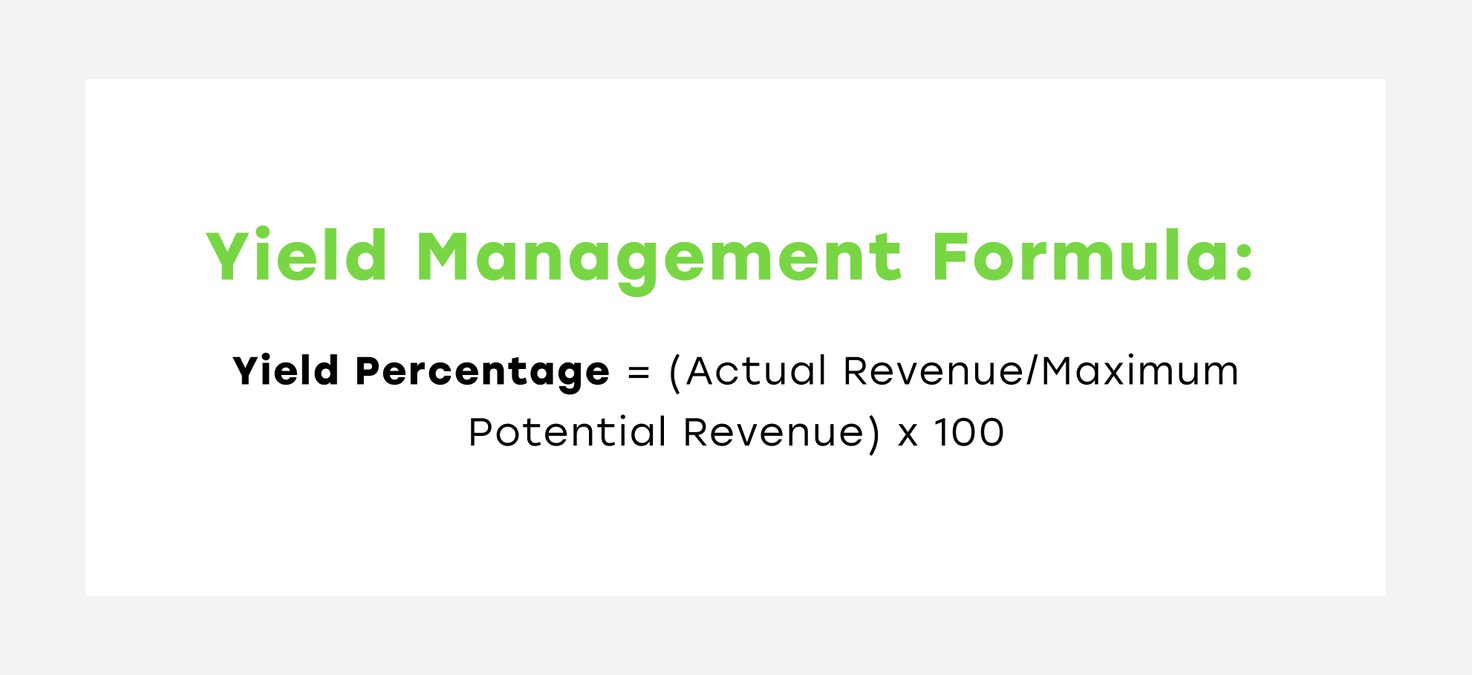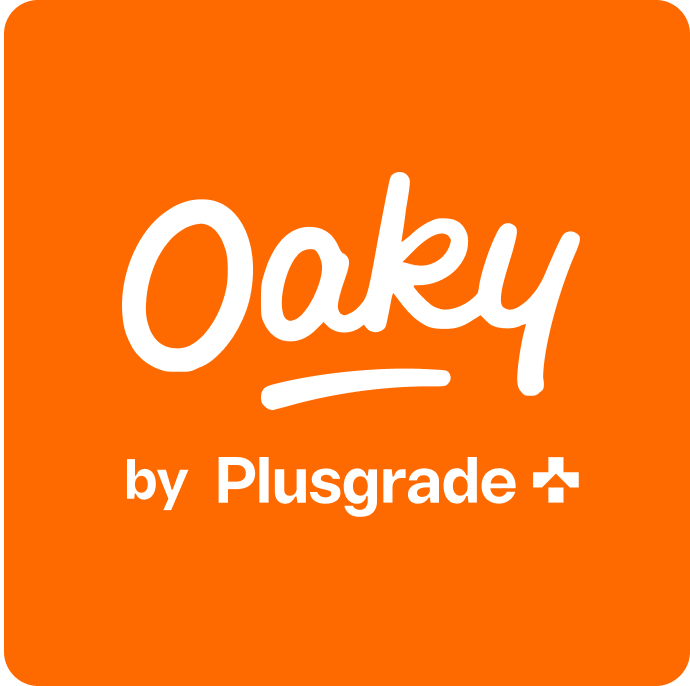What is hotel yield management: An in-depth guide to maximizing revenue
Oaky
•

With hotel yield management, you can generate more revenue by fully leveraging your hotel's assets and services. This approach focuses on how you can align inventory and pricing with influencing factors like market demand and guest behavior. All in all, it’s one of the most powerful tools available to the hotel’s revenue management team.
In this practical guide, we explore all the benefits, key elements, and strategies to equip your team to maximize your hotel’s revenue.
What is hotel yield management?
Hotel yield management is a strategic pricing and inventory management technique that’s frequently used in the hospitality industry. Originating from the airline industry, it involves dynamically adjusting prices based on market demand, demand forecasting, and customer segments. This way, revenue from a fixed inventory supply, such as hotel rooms, can be maximized.
In short, it focuses on selling the right product to the right customer at the right time and at the right price.
Why is hotel yield management important?
In the hotel industry, yield management is essential because hotel rooms are a perishable product. What’s meant by this is that once a night passes, any unsold rooms become a lost opportunity to generate revenue. Effective yield management strategies enable hotels to optimize their pricing and fill as many rooms as possible while at the same time maintaining competitive rates.
What is the formula for hotel yield management?
The formula for hotel yield management is designed to calculate the yield percentage. This measures how effectively a hotel can maximize its potential revenue.
To work it out, you’ll use the following formula:
Yield Percentage = (Actual Revenue/Maximum Potential Revenue) × 100
In this formula:
Actual Revenue represents the total revenue the hotel generates from the sale of rooms.
Maximum Potential Revenue refers to the highest possible revenue that could be generated if every room were sold at its highest rate.

Here’s what this formula will look like in practice:
Let's say a hotel has 20 rooms with the maximum room rate capped at $150 per night.
If the hotel sells 15 of its 20 rooms at an average rate of $120, the actual revenue would be $1,800. Using the yield management formula, the yield percentage would be 60%. In other words, the hotel managed to capture 60% of its potential maximum revenue.
What is the difference between hotel yield management and hotel revenue management?
The main differences between yield management and revenue management are in terms of focus, scope, approach, and responsibilities.
Focus
Yield Management: Focuses primarily on yielding revenue through price optimization and sales volume.
Revenue Management: Focuses on a comprehensive approach to maximizing overall revenue across multiple revenue streams and departments like F&B deals and spa treatments.
Scope
Yield Management: Has a narrow scope, concentrating mainly on room rates and occupancy.
Revenue Management: Encompasses a broader scope, including metrics from various hotel departments, customer segments, and overall profitability.
Approach
Yield Management: More tactical, dealing with immediate sales and pricing strategies without considering long-term impacts or secondary revenue streams.
Revenue Management: Strategic, involving long-term planning, integrating multiple aspects of hotel operations, and focusing on sustained profitability.
Responsibilities
Yield Management: Primarily responsible for adjusting prices and managing sales volumes to optimize revenue for specific sales (for example, room bookings).
Revenue Management: Involves a broader range of responsibilities, including analyzing data, managing distribution channels, optimizing overall revenue, and making decisions that impact multiple departments.
What are the benefits of hotel yield management?
1. Boosting hotel revenue and profit margins
The primary benefit of a yield management system is its ability to boost revenue and profit margins. By optimizing pricing and inventory management, hotels can maximize their revenue potential and achieve their financial goals, even during harder economic conditions.
2. Improving occupancy
Hotel yield management boosts occupancy by using dynamic pricing to adjust rates based on demand and market conditions. This ensures that rooms are always sold at the optimal price.
It involves forecasting demand and analyzing booking patterns to make informed decisions, target different guest segments, and manage overbooking risks.
3. Better inventory management
Yield management enables hotels to manage room inventory and allocate resources better. Teams can make data-driven decisions about pricing and availability, which helps them predict demand increases in advance.
4. Navigating economic challenges
In the hospitality industry, economic conditions can significantly impact demand for hotel rooms. Travel is generally considered a luxury. Even businesses might cut travel expenses first, meaning that hotels can also expect a drop in business travelers.
Yield management helps hotels navigate these fluctuations during challenging economic periods. By adjusting pricing and inventory strategies, they can maintain healthy occupancy and ensure the revenue achieved isn’t impacted as significantly.
5. Thriving in competitive markets
Yield management provides hotels with a competitive advantage. It enables them to offer competitive rates by dynamically adjusting prices in response to actual market conditions and customer behavior.

6. Enhancing price transparency
Yield management also promotes price transparency. For example, when room rates drop during unpopular periods like weekdays or colder winter months, guests can see that room rates reflect the demand.
This level of transparency helps build trust with customers. It also encourages direct bookings, which are often more profitable for hotels than bookings made through third-party platforms.
7. Elevating the guest experience
Thanks to customized pricing that reflects real-time demand, guests can take advantage of rates and tailored offers. It matches room types to guest preferences, leading to higher satisfaction.
For example, if you adjust pricing based on guest segments, you can add that extra level of personalization. This way, groups like families traveling with young kids or couples celebrating a special occasion will feel that their support is valued.
8. Improved resource allocation
Improved revenue management allows for better investment in staff and amenities. Not only does this result in superior service, but can also cut costs which can have a negative impact on generated revenue.
Additionally, yield management reduces price fluctuations to prevent surprises.
What are the elements of yield management in the hospitality industry?
One of the main reasons why hotel yield management strategies lead to optimized pricing is because they rely on multiple elements. It looks beyond the hotel’s own historical data and considers other influencing factors like competitor pricing to create a pricing strategy that can increase revenue even amid demand fluctuations.
Here are the various elements involved:
Forecasting: Predicting future demand using historical data, market trends, and other factors to make informed pricing and inventory decisions, helping hotels be much better prepared for peak periods.
Inventory Control: Managing room availability and allocation to ensure the best use of hotel resources and maximize revenue.
Dynamic Pricing: Adjusting room rates in real-time based on factors like demand, competition, and booking patterns to optimize revenue.
Segmented Pricing: Offering different rates to different customer segments using factors such as booking channel, customer loyalty, or length of stay.
Overbooking: Booking more rooms than available to account for cancellations and no-shows, ensuring higher occupancy rates without exceeding capacity.
Length-of-Stay Restrictions: Implementing requirements for a maximum or minimum length of stay like requiring guests to book five consecutive nights during peak periods to manage occupancy levels and increase profitability.
Competitive Pricing Analysis: Monitoring and adjusting rates based on competitors' pricing to remain competitive in the market.
Performance Analysis: Evaluating and measuring the effectiveness of various strategies and techniques used to optimize room revenue and occupancy. This entails keeping an eye on the KPIs such as: ADR, RevPAR, TRevPAR, and GOPPAR.
Promotions and Packages: Creating special offers or bundled packages to attract specific customer groups or boost occupancy during low-demand periods.
Booking Window Management: Adjusting pricing and availability based on how far in advance reservations are made, optimizing revenue for both short-term and long-term bookings.
Yield Management Software: Using specialized software to analyze data, forecast demand, and automate pricing adjustments to optimize revenue.
What are the most effective hotel yield management strategies?
Revenue managers typically use a combination of the following six strategies to grow their hotel’s revenue:

1. Dynamic pricing strategy
Dynamic hotel pricing is a popular variable pricing strategy that monitors demand fluctuations and adjusts the room rates in real-time accordingly. When demand increases, so do the rates. Then, when demand slows down, the rates get decreased.
Not only does a dynamic pricing strategy help hotels increase revenue, but it’s also a way of automating revenue management. Sophisticated revenue management systems make it possible to adjust room rates by the day.
2. Hotel overbooking
With hotel overbooking, a hotel intentionally accepts more reservations than its number of available rooms. It’s implemented to make up for possible no-shows and last-minute cancellations and keep occupancy high. It requires careful management to avoid guest dissatisfaction or damage to the hotel's reputation.
While poorly executed hotel overbooking can result in unhappy guests, the reverse is also true. As Clement Deplanche, Director of Revenue Strategy at Accor, explains in Oaky’s LowKey Hospitality podcast episode, it can also specifically be used to optimize inventory and improve guest satisfaction.

3. Upselling and cross-selling
Upselling and cross-selling are key strategies in hotel yield management. Not only can they help boost revenue, but also enhance the guest experience.
Upselling in a hotel setting means offering guests an upgrade to a better room or premium amenities, which increases the revenue per booking.
Cross-selling involves suggesting additional services like spa treatments, dining experiences, or local tours to enhance their stay.
To enhance the impact of these strategies, hotel groups and chains usually use hotel upsell software like Oaky. Like dynamic pricing, upselling is a strategy that is best automated with software to get tangible results and save time on manual tasks.
Manually upselling rooms and amenities is time-consuming and inefficient. However, by using Oaky, your front desk team can focus all their attention on the guest. These interactions can be used to build rapport with guests and gather information about guest needs helping predict demand.
Discover how hotels worldwide harness the power of Oaky
4. Length of stay (LOS) restrictions
When your hotel is experiencing high demand, one way to maximize hotel revenue and optimize occupancy is by implementing minimum stay requirements. In other words, guests who want to book a hotel room during this period will have to book for a minimum number of nights.
In practice, length-of-stay restrictions are typically implemented over the weekend, with guests having to book both Friday and Saturday evening. During peak seasons, a minimum stay of three nights during the week is also common.
5. Segmented pricing
Segmented pricing involves offering different rates to different types of customer segments, such as business travelers, leisure travelers, or group bookings. This helps to capture a broader range of customers and optimize revenue.
For example, group bookings that book more rooms at the same time will qualify for discounted rates.
Another factor that you can use is the age of the guest. For example, children under the age of 12 might pay half the rate.
6. Promotions and packages
During the low-demand periods, hotels can offer more rooms at a reduced rate to increase occupancy. In addition to simply lowering the hotel room rate, they can also create special offers and bundled packages.
For example, using bundled packages they can include extra services. An additional benefit of going the package route is that you can also create more ancillary revenue. For example, while guests enjoy free welcoming drinks at the hotel’s onsite restaurant, they get a chance to peruse your dinner options and decide to enjoy dine at your restaurant the next evening too.
How to implement a yield management strategy in your hotel
Step 1: Understand your guests
To implement yield management successfully, it's crucial to have a deep understanding of your customers. Key criteria to analyze include:
Customer demographics
Spending habits
Booking patterns
Guest preferences
This information will help you identify key customer segments, allowing you to tailor your pricing strategies accordingly.
For example, leisure travelers are usually more price-sensitive than business travelers. Their spending habits also impact their booking patterns as they tend to book more in advance. This means that as part of your yield management strategy, you can advertise promotions and packages a few months before the low season starts.
Step 2: Analyze the market and competitors
In addition to understanding your guests, you also need to study the market and your competitors. To do this, conduct a thorough analysis that includes performing a SWOT analysis. This exercise will help you identify internal factors like your hotel’s strengths and weaknesses as well as external factors like opportunities and threats.
It’s also key that you specifically pay attention to competitor pricing and market trends. As guests are more inclined to do an online price comparison nowadays, this step will ensure that you charge competitive rates.
Step 3: Analyze data for rate plan development
Yield management relies on accurate data analysis to make informed pricing decisions. When reviewing your hotel’s historical booking data, pay close attention to the following:
Room Sales: Track the number of rooms sold for each date.
Reservations and Cancellations: Monitor the total number of reservations, cancellations, no-shows, early departures, and extended stays.
Bookings Turned Down: Analyze instances where bookings were rejected by guests due to price or room type availability, as well as when hotel’s had to decline a booking request because of a lack of room availability.
Event-Specific Bookings: Identify the impact of specific events like an annual conference, fair,x or sporting event on booking patterns.
Step 4: Develop a rate plan
Create a detailed rate plan that outlines your pricing strategy for each day of the year. This plan should consider:
Future demand forecasts
Booking limits
It’s essential to review this plan regularly and adjust it accordingly based on changes in market demand and consumer behavior.
Step 5: Integrating yield management with revenue management
Yield management techniques form critical components of your hotel’s broader revenue management strategy. While yield management focuses on pricing and inventory control, revenue management encompasses a wider range of activities, including resource allocation, distribution channels, and marketing strategies. This means that revenue managers can achieve a more holistic approach to maximizing revenue when they integrate yield management with revenue management.
Final thoughts
Hotel yield management is an essential strategy for any hotel. It can maximize your revenue, help you stay competitive, and enhance the guest experience.
While it calls for considerable data analysis, the insights gathered can be used in more ways than one. Aside from using it to inform your pricing strategies, you also gain a better understanding of guest needs. This way, your hotel can also plan ahead to optimize operations.

